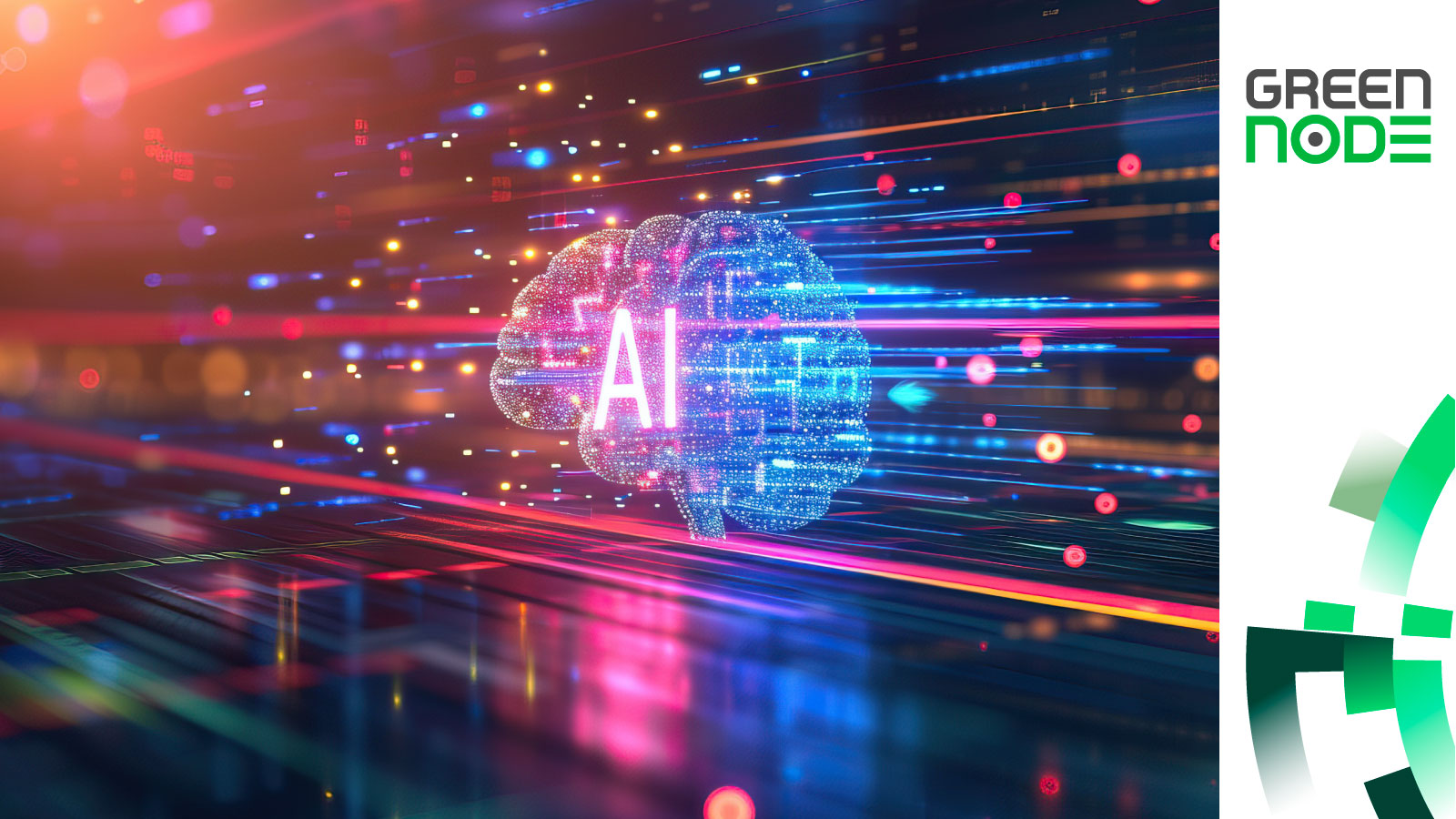Welcome to the present moment where the forefront of artificial intelligence showcases the visage of AI agents, specifically empowered by GPT-4 bots. These agents exhibit proficiency in executing tasks by meticulously analyzing, searching for information, and assimilating data from the web.
Drawing connections, it becomes evident that AI Agents represent a pivotal advancement in Generative AI, propelling us toward the coveted realm of AGI (Artificial General Intelligence) - an autonomous, self-aware entity with human-like capabilities.
Let’s delve into the AI frontier: The progression from ChatGPT to AutoGPT and beyond.
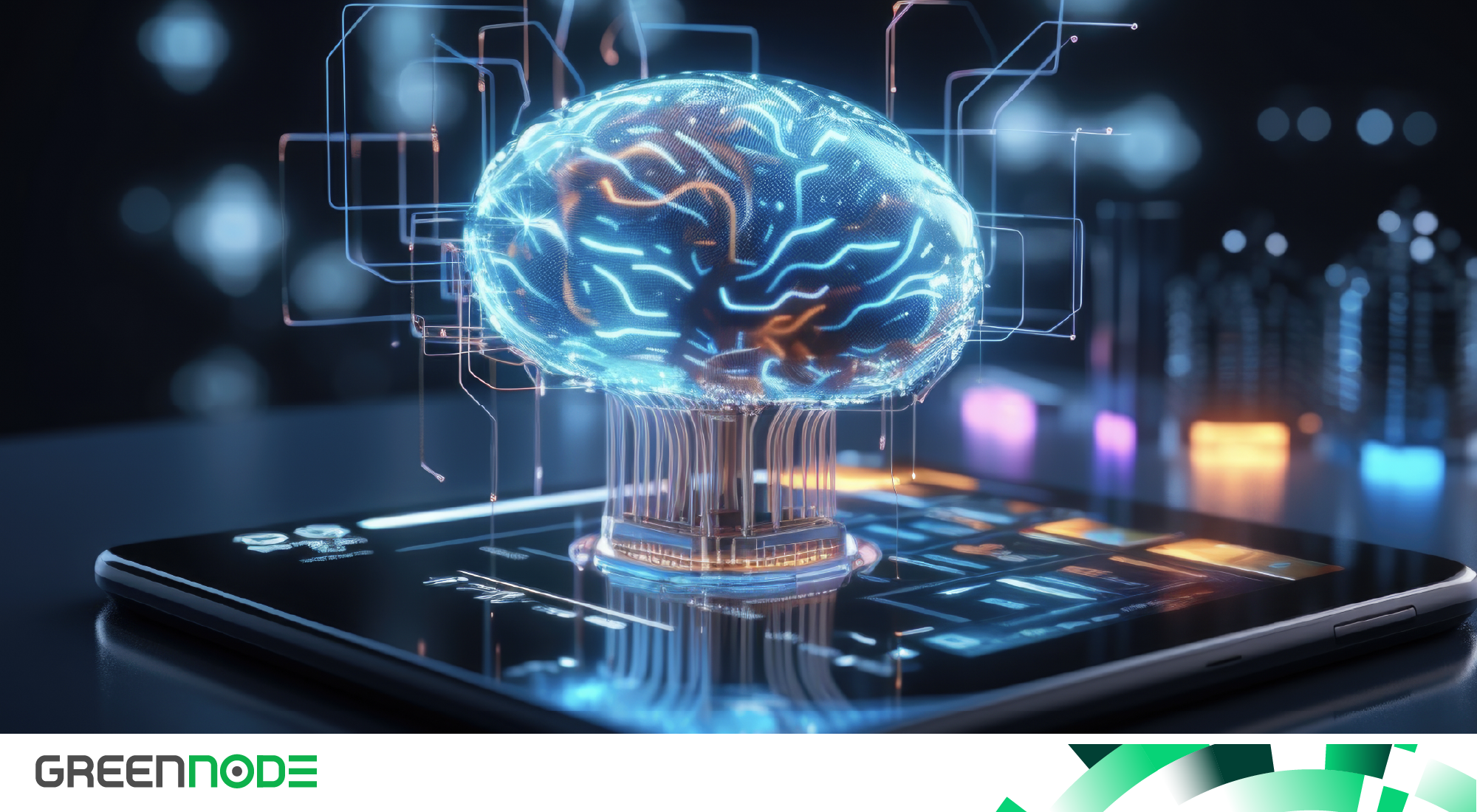
Are you ready to collaborate with your new counterparts, the AI Agents?
Envision a typical workday in the office, where you're tasked with creating a market analysis for a potential product. The process unfolds systematically: you acquaint yourself with the subject, search for relevant documents, draft paragraphs, and if needed, seek assistance from colleagues.
This methodical human approach is precisely what the latest generation of AI-based applications aims to replicate. Primarily available as open-source code on GitHub, these applications, exemplified by the well-known AutoGPT, are built upon the GPT-4 model. These software systems facilitate the development of AI-based autonomous agents. Endowed with a broad set of objectives, these agents can navigate solutions through diverse steps, including web searches or code execution.
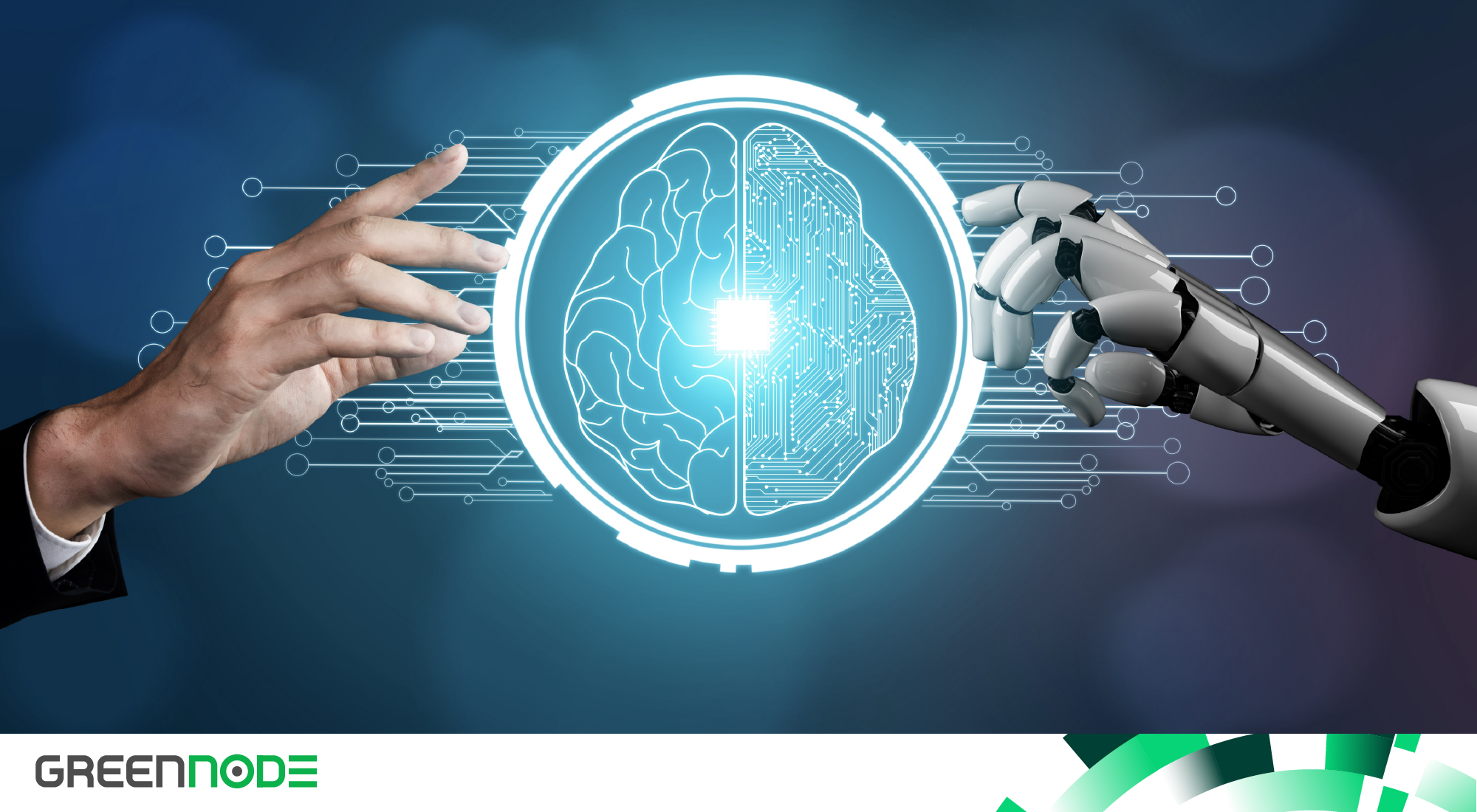
AI Agents are self-governing computer programs with the ability to carry out tasks without human intervention. They operate autonomously or engage with other agents or humans through natural language or alternative communication methods. With potential applications across customer service, personal assistants, software development, games, robotics, and more, AI Agents hold a promising future.
In contrast to ChatGPT, which executes one task at a time based on a human-given prompt, systems like AutoGPT can independently navigate toward desired outcomes through intermediate steps, overcoming the token limitations inherent in GPT-4. These applications can be applied in diverse scenarios, such as market research or providing assistance in scientific research.
Andrej Karpathy, co-founder of OpenAI, illustrates the process with a Twitter analogy: each GPT generation is akin to a thought. By interconnecting them, it becomes feasible to develop agents capable of autonomous action toward a predetermined goal. Various versions have emerged, including AutoGPT, BabyAGI, Camel, Jarvis, AgentGPT, and notably, the Hugging Face Transformer Agents.
This proliferation of tools signifies that combining Python and web access, coupled with the capabilities provided by the OpenAI API, can produce remarkable products.
AutoGPT: A Model AI Agent
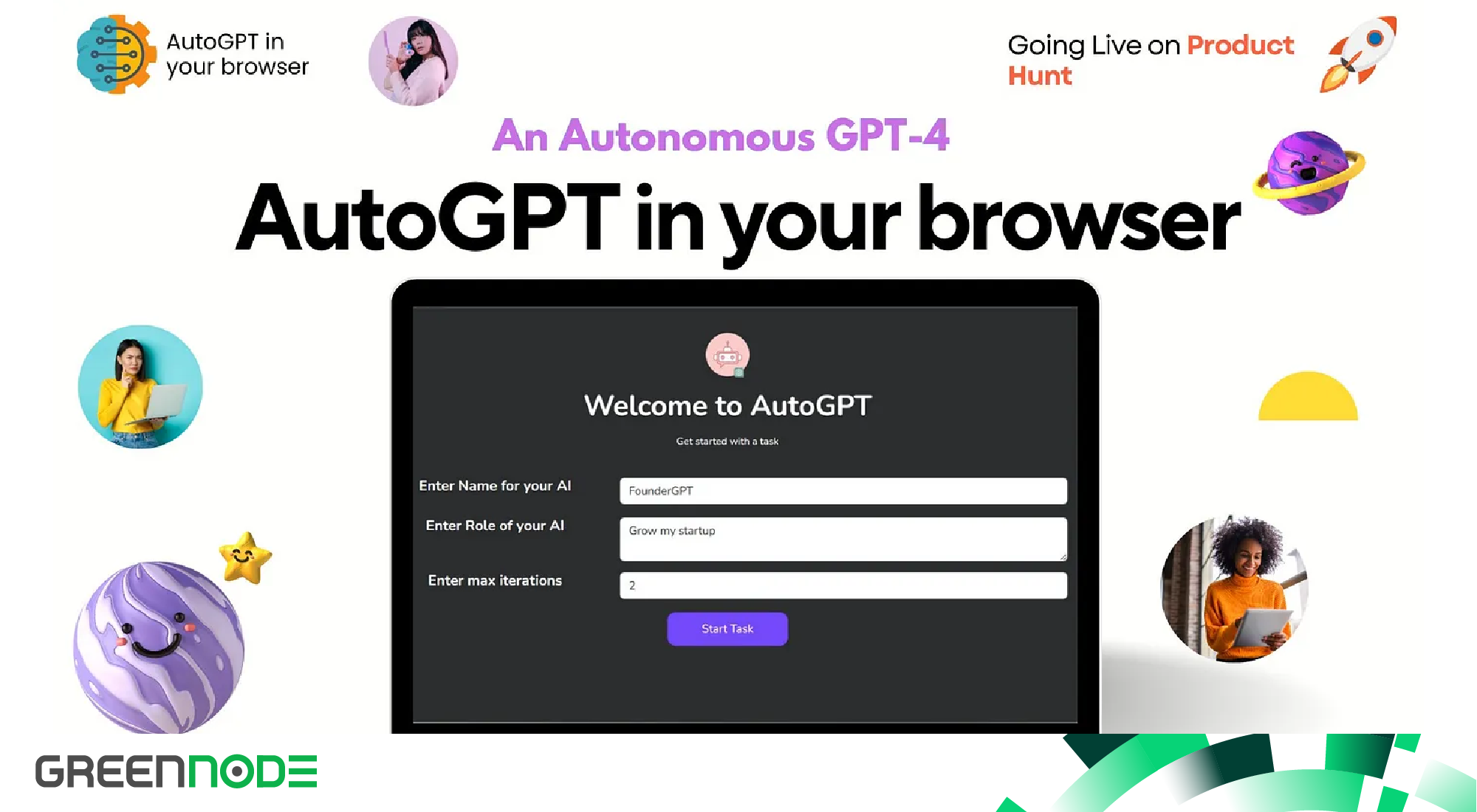
AutoGPT, an open-source experimental application, exemplifies the capabilities of the GPT-4 language model. This program strings together the "thoughts" of the language model to autonomously accomplish predefined goals. As a pioneering example of GPT-4 operating entirely autonomously, AutoGPT is pushing the boundaries of artificial intelligence.
Operating as an experimental open-source application, AutoGPT harnesses the power of GPT-4 to independently manage projects such as website creation, article writing, logo generation, and product promotion. With internet access, it can conduct research, gather information, and engage with popular platforms like Twitter.
The essence of AutoGPT lies in its autonomy. It operates independently, learning from its experiences and continually improving. Equipped with both long-term and short-term memory systems, it can store and recall task-relevant information efficiently.
Meet AgentGPT: Your On-Demand AI Agent
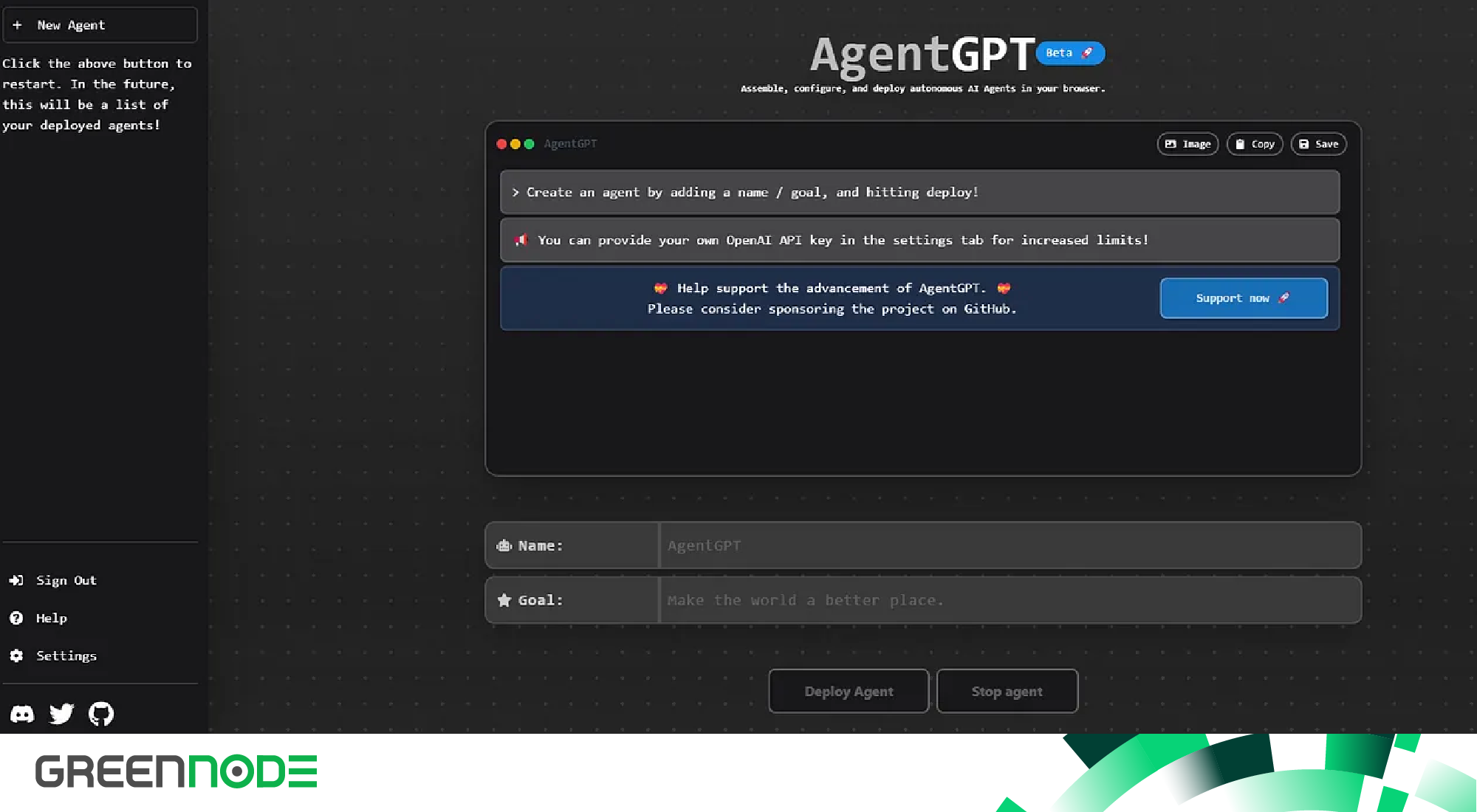
AgentGPT is a browser-based application that enables you to initiate an AI Agent directly from your web browser. You have the flexibility to name your AI Agent and establish any lawful objective for it. Through thoughtful task analysis, execution, and learning from outcomes, the AI Agent endeavors to accomplish the defined goal.
BabyAGI: Initiating the Journey toward AGI
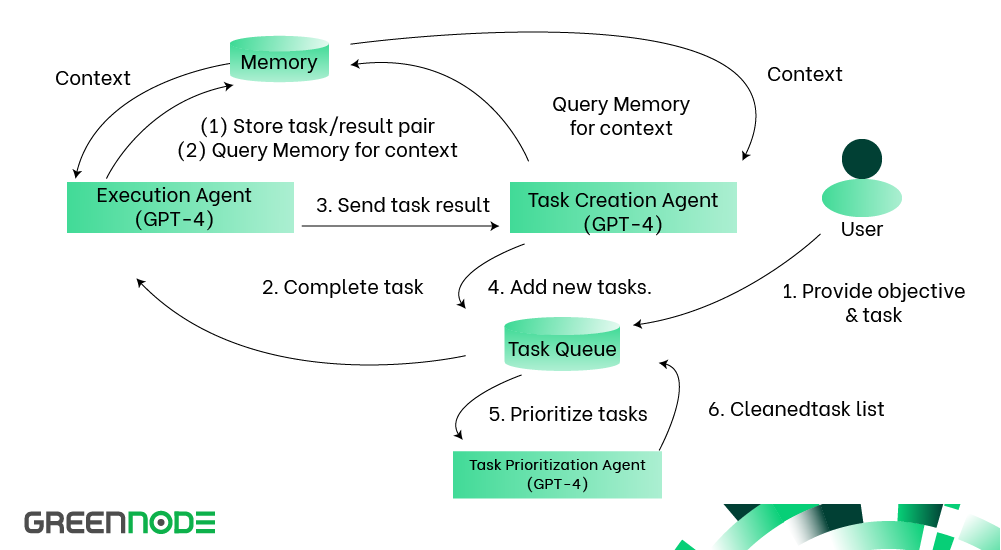
This Python script serves as an illustration of an autonomous AI Agent driven by LLM. Utilizing the OpenAI API, the system is designed to generate and execute tasks. The core concept behind the project is to equip the assistant with the necessary tools for accomplishing tasks within the capabilities of an LLM. BabyAGI is capable of executing code arbitrarily, managing its own flow, and handling memory, whether through pre-training, tuning, or prompt optimization.
Presently, BabyAGI stands as a Proof of Concept but remains in active development.
In essence, BabyAGI operates similarly to Auto-GPT, albeit with a Python script developed by Yohei Nakajima. Its objective is to initiate a business from an initial prompt, akin to Jackson Greathouse Fall's HustleGPT project.
A noteworthy detail is that the web version of BabyAGI, accessible via a browser, is aptly named "God Mode".
Camel: AI Agents for Corporate Environments
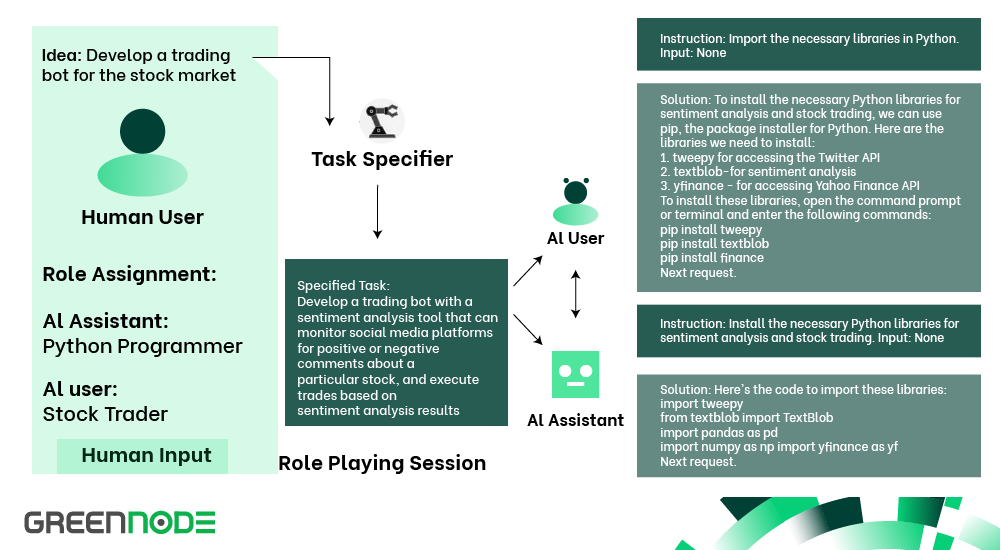
CAMEL, short for Communicative Agents for "Mind" Exploration of Large Scale Language Model Society, introduces a framework for role-playing agents, involving two AI agents engaged in communication:
- User AI agent: Provides instructions to the AI assistant with the aim of completing a task.
- AI assistant agent: Follows the AI user's instructions and responds with solutions to the task.
- Task specifier agent: This additional agent, known as the task specifier agent, is responsible for determining a specific task for the user and the AI assistant, eliminating the need for the user to spend time defining it.
In the depicted example, a human conceives the idea of developing a trading bot. The AI user is a stock trader, and the AI assistant is a Python programmer. The task specifier agent first proposes a detailed task (monitor social media sentiment and trade stocks based on sentiment analysis results). Subsequently, the AI user agent becomes the task planner, the AI assistant agent becomes the task executor, and they engage in a loop of queries until certain termination conditions are met.
The crux of Camel lies in the meticulous engineering of prompts, particularly the inception prompt. These prompts are carefully crafted to assign roles, prevent role reversal, discourage damage and misinformation, and foster consistent conversation. Refer to Camel's paper for a detailed examination of the prompts.
LangChain: An Open-Source Framework for Large Language Models
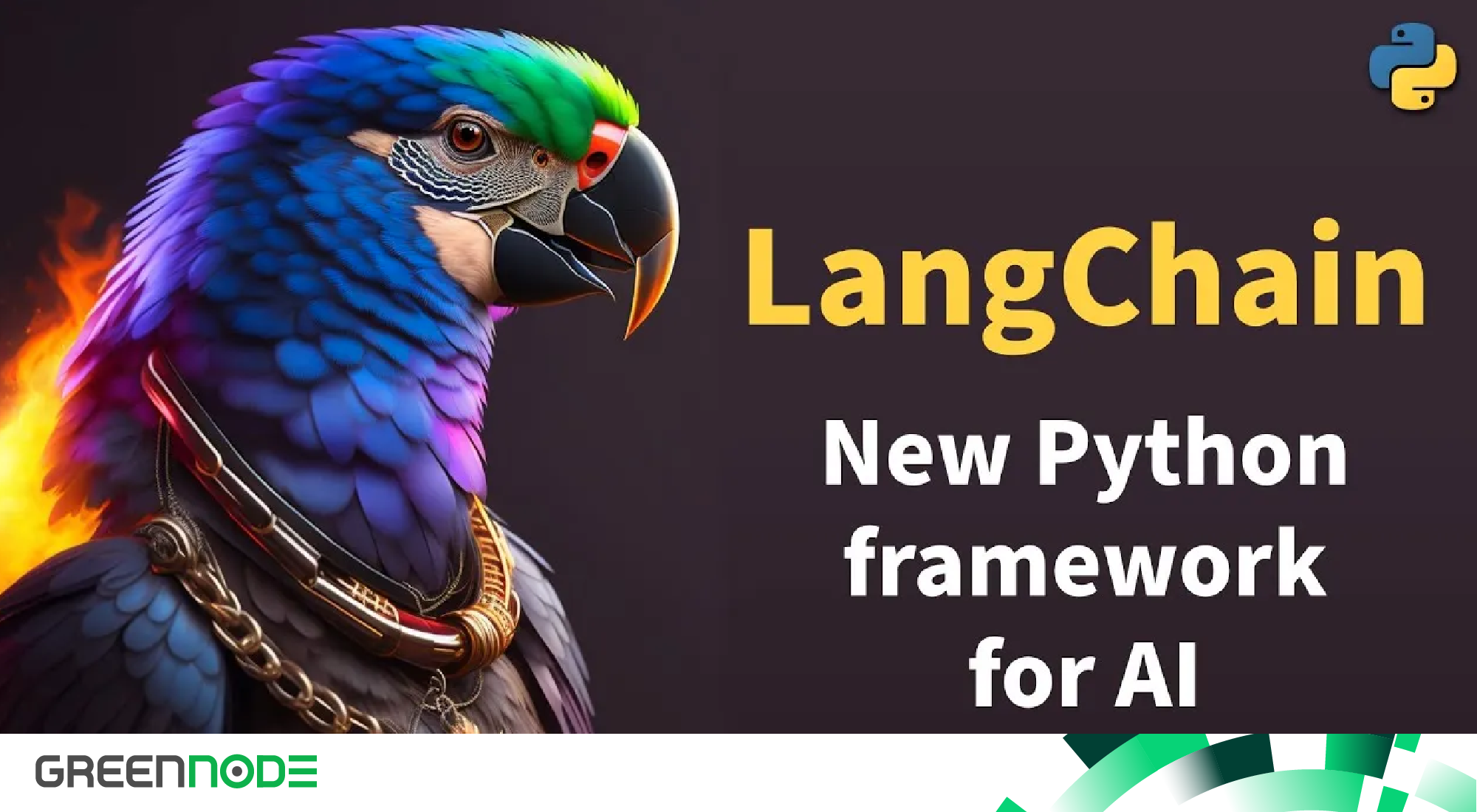
LangChain is an open-source framework designed to harness the capabilities of Large Language Models (LLMs) for the development of sophisticated language-based applications. Its standout feature lies in its seamless integration of LLMs with external data sources, allowing for interactive functionalities within the application's environment.
Developers find LangChain advantageous due to its modular components, offering user-friendly abstractions for working with language models. These components can be flexibly combined into customizable chains tailored to specific application requirements. Additionally, LangChain facilitates smooth integration with major platforms such as Amazon, Google, and Microsoft Azure, providing access to cloud storage and API wrappers for diverse data sources like news, movies, and weather.
At the core of LangChain, the API Agent assumes a pivotal role in constructing advanced conversational interfaces. Leveraging tools like Google Search, it ensures accurate responses to user queries, addressing challenges often associated with LLM usage, such as generating incorrect answers or relying on outdated information.
Colin Eberhardt's innovative reimplementation of LangChain in just 100 lines of code underscores its potential for enhancing capabilities. This implementation showcases LangChain's adeptness in intelligently handling complex queries through the integration of various tools, including real-time data sources.
Comprehending the internal mechanisms of LangChain provides valuable insights for achieving desired outcomes and helps developers understand unexpected results. With LangChain, developers can craft highly intelligent chatbot systems capable of delivering up-to-date and accurate responses, pushing the boundaries of natural language understanding and interaction.
The City of AI Agents
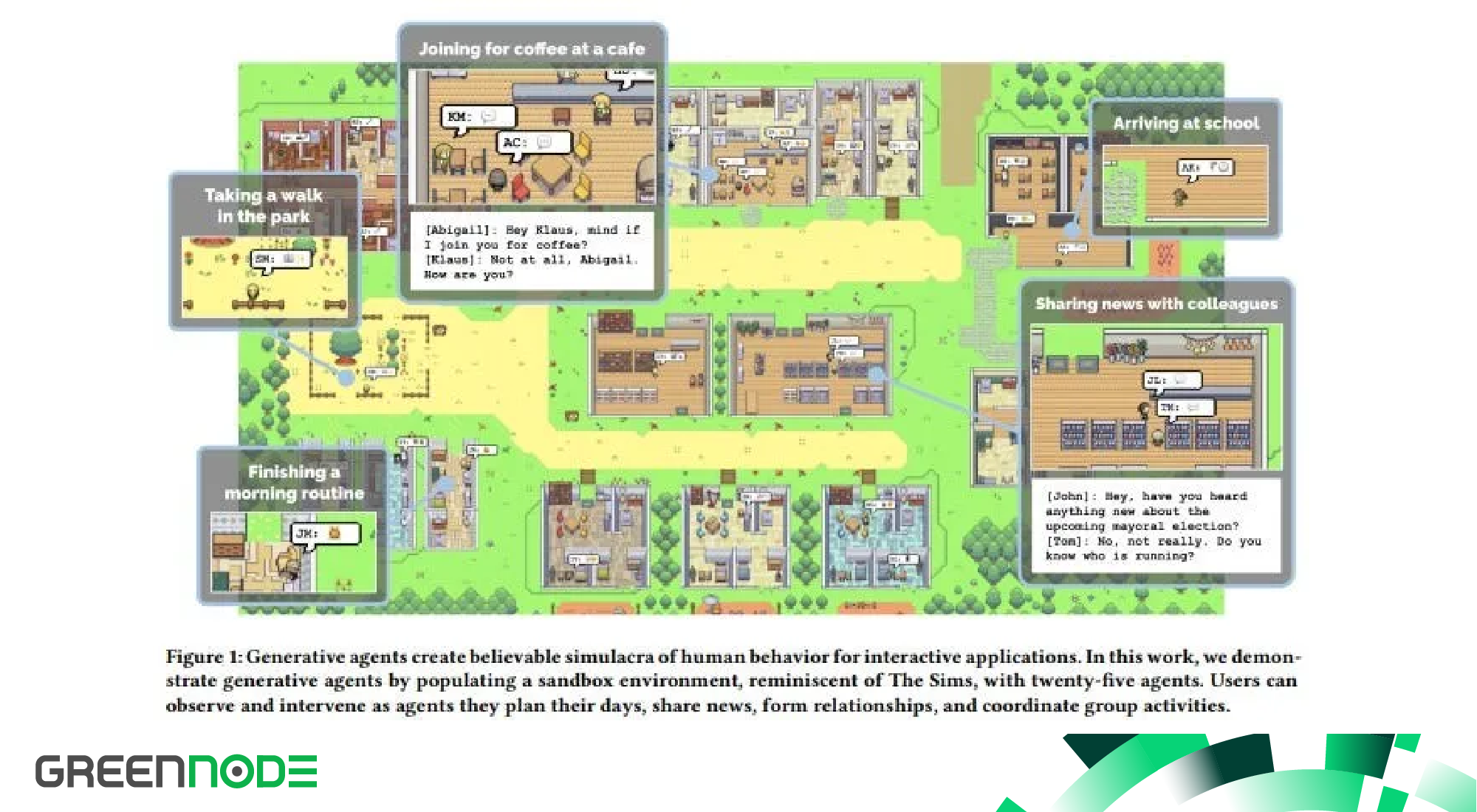
A collaborative study conducted by Stanford and Google researchers has unveiled remarkable insights into "generative agents," showcasing their immense potential in the realm of AI. In a simulation video game featuring 25 characters, the researchers successfully orchestrated interactions among these characters in a remarkably human-like manner. The characters demonstrated abilities to communicate, memorize information, reflect on experiences, and formulate plans for daily activities. They shared information, forged and retained new relationships, and coordinated actions, mirroring the behavior of real humans. This research marks a significant stride in AI advancement, transitioning from models that generate blog posts to models that authentically emulate human behavior.
AI Agents: A Significant Step Toward AGI?
In conclusion, the emergence of AI Agents transcends mere breakthrough status — it signifies a paradigm shift in our interactions with machines. Functioning as personalized digital assistants, these agents exhibit versatility, handling a spectrum of tasks from simple commands to intricate projects. What sets them apart is their adaptability, not confined to a singular predefined function but capable of learning and evolving across a myriad of tasks over time.
Nevertheless, it's crucial to recognize that, despite rapid advancements, AI Agents have not reached AGI status. Current agents like AutoGPT lack self-awareness and a comprehensive understanding of the world. They lack personal motivations or goals, generating human-like text without a genuine comprehension of the content.
Despite this, the progress made with these AI agents represents a significant leap in the field of artificial intelligence. These technologies are reshaping our work processes, augmenting productivity, and paving the way for a future where AI Agents could play substantial roles in our daily lives.
As we navigate this new era of AI, it becomes imperative to contemplate the implications of a web optimized for machines - a domain where AI agents engage in research and development. This evolution introduces both challenges and opportunities. In the foreseeable future, coexisting with AI agents might become a reality, leveraging their capabilities to enrich our lives while continually managing the delicate equilibrium of human-machine interaction.
Stay updated with the latest news and advancements in the creative AI domain by staying informed through GreenNode.
